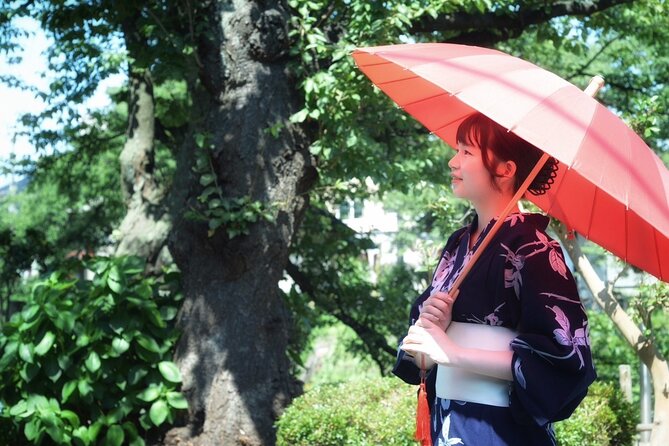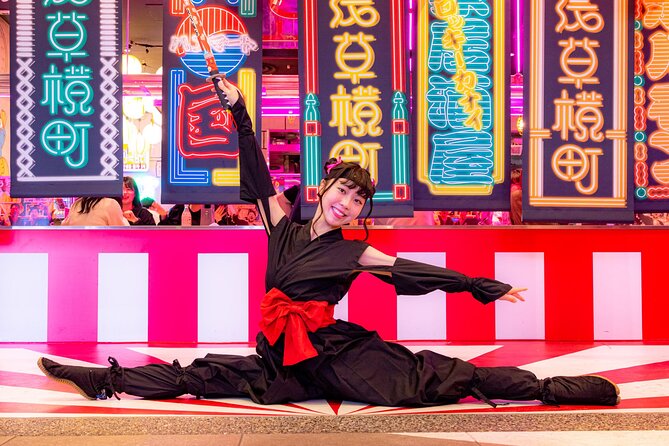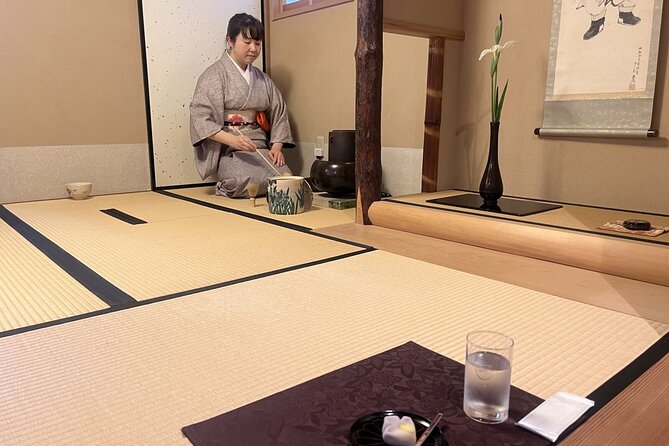From Asakusa: Old Tokyo, Temples, Gardens and Pop Culture
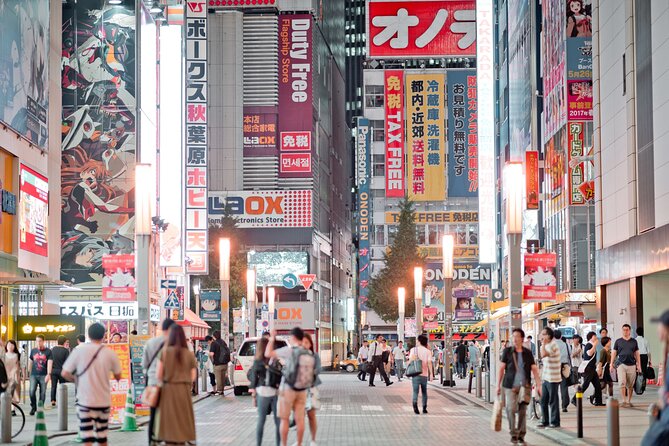
As visitors wander through the historic district of Asakusa in Tokyo, they will encounter a harmonious blend of ancient traditions and contemporary influences that shape the city’s unique character. From the captivating allure of old temples to the tranquility of lush gardens, Asakusa offers a glimpse into Tokyo’s multifaceted identity.
But what lies beyond these iconic landmarks and serene landscapes? The answer may surprise you, revealing a vibrant pop culture scene that coexists with the area’s traditional charm, creating a dynamic tapestry of experiences waiting to be explored.
Key Points
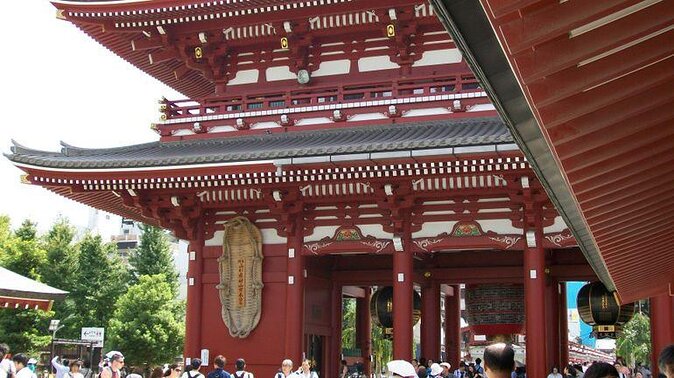
- Asakusa blends historic charm with vibrant festivals and unique shopping experiences.
- Senso-ji Temple offers a glimpse into Tokyo’s cultural heritage with traditional ceremonies and iconic structures.
- Ueno Park combines nature’s beauty with diverse museums for leisure and intellectual stimulation.
- Tokyo’s Japanese gardens provide tranquil retreats with serene water features and paths for relaxation and contemplation.
It's also worth checking out some other tours and experiences nearby.
Asakusa: A Historic District

Asakusa stands out as a historically rich district in Tokyo, Japan, known for its historic charm and cultural significance. The area is renowned for its well-preserved heritage sites that offer a glimpse into Japan’s rich past.
Visitors can enjoy the traditional atmosphere of Asakusa, characterized by its ancient temples, historic buildings, and traditional shops. The district’s cultural significance is evident in its vibrant festivals, such as the Sanja Matsuri, which attracts millions of visitors each year.
Asakusa’s streets are lined with traditional shops selling local crafts and snacks, providing a unique shopping experience. Overall, Asakusa’s historic charm and cultural heritage make it a must-visit destination for those seeking to explore Tokyo’s rich history and traditions.
Senso-ji Temple: Iconic Landmark
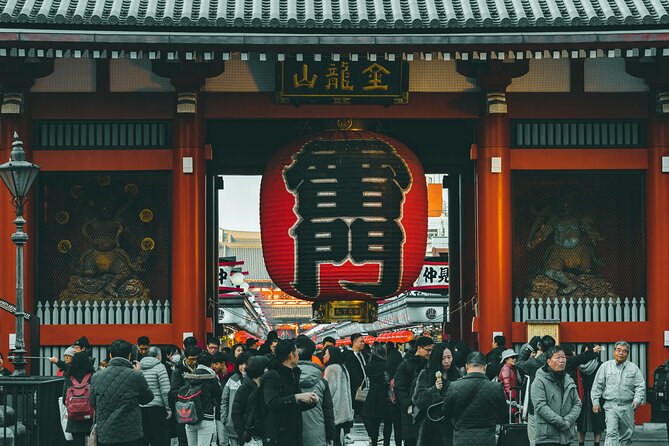
Nestled in the heart of Tokyo, Senso-ji Temple stands as an iconic landmark revered for its cultural significance and historical importance.
-
Cultural significance:
-
Senso-ji is Tokyo’s oldest temple, dating back to the 7th century.
-
Architectural details:
-
The vibrant red color of the Kaminarimon Gate welcomes visitors to the temple grounds.
-
The main hall, or Hondo, houses a stunning golden image of Kannon, the goddess of mercy.
Visitors can enjoy the serene atmosphere, witness traditional ceremonies, and explore the bustling Nakamise shopping street offering a wide array of souvenirs and local snacks. Senso-ji Temple continues to be a must-visit destination for those seeking a glimpse into Tokyo’s rich cultural heritage.
Ueno Park: Nature and Museums
Ueno Park in Tokyo offers a harmonious blend of natural beauty and cultural enrichment with its expansive green spaces and diverse range of museums. Visitors can enjoy leisurely nature walks through the park’s serene landscapes, dotted with cherry blossoms in the spring and vibrant foliage in the fall.
The park is also home to several renowned museums, including the Tokyo National Museum, the National Museum of Nature and Science, and the Ueno Zoological Gardens. These museums provide a fascinating insight into Japan’s history, scientific advancements, and biodiversity.
Whether strolling through the park’s tranquil surroundings or delving into the world of art and science within its museums, Ueno Park offers a delightful mix of outdoor recreation and intellectual stimulation for all who visit.
Japanese Gardens: Tranquility in Tokyo
Where can visitors find serene oases amidst the bustling cityscape of Tokyo? Japanese Gardens offer a peaceful retreat from the urban hustle, providing visitors with a tranquil escape into nature. In Tokyo, these Zen gardens are meticulously designed to promote relaxation and contemplation.
Here are some key features of Japanese Gardens in Tokyo:
- Serene water features that create a calming ambiance
- Pruned trees and carefully arranged rocks symbolizing harmony and balance
- Walking paths that encourage mindfulness and reflection
These gardens serve as a sanctuary for those seeking a moment of respite from the fast-paced city life, allowing visitors to enjoy the beauty of Japanese aesthetics and find inner peace amid the greenery.
Traditional Vs. Pop Culture
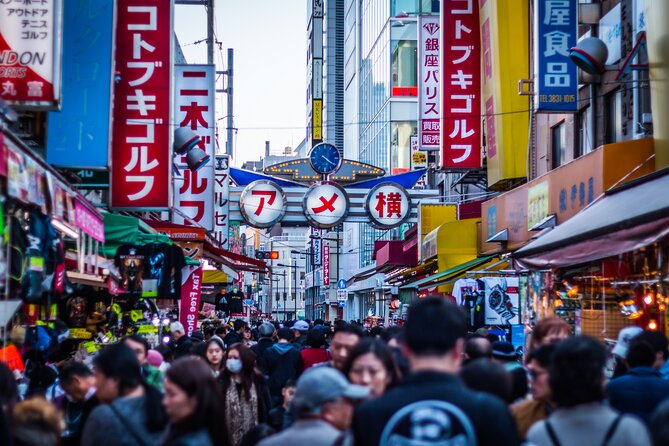
Japanese Gardens in Tokyo offer a serene contrast to the vibrant clash between traditional and pop culture influences in the city. Traditional customs intertwine with modern trends, creating a unique blend that shapes Tokyo’s dynamic atmosphere. Here is a comparison between the two contrasting elements:
| Traditional Customs | Modern Trends |
|---|---|
| Tea Ceremonies | Anime and Manga |
| Kimonos | Cosplay |
| Kabuki Theater | J-Pop Music |
| Calligraphy | Video Games |
| Cherry Blossom Festivals | Fashion Trends |
These examples illustrate how Tokyo seamlessly integrates its rich cultural heritage with contemporary elements, showcasing a city where the past and present coexist harmoniously, offering visitors a diverse and vibrant experience.
Local Cuisine: Food Sampling
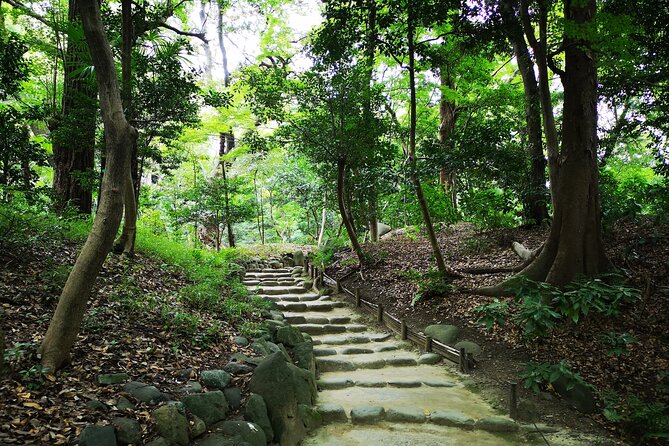
Local cuisine in Asakusa offers a delightful array of traditional dishes for visitors to sample and savor. When exploring the culinary scene in Asakusa, travelers can look forward to:
-
Local delicacies: Indulge in savory treats like Ningyo-yaki (doll-shaped cakes) or Senbei (rice crackers) from street vendors.
-
Culinary exploration: Dive into the flavors of Asakusa by trying out dishes such as Tempura, Sukiyaki, or Unagi-don at traditional restaurants.
-
Hidden gems: Discover lesser-known gems like Imahan, a renowned Sukiyaki restaurant, or Kibi-dango, a sweet snack made from millet flour.
Visitors can embark on a mouth-watering journey through Asakusa’s food scene, experiencing the authentic tastes of this historical district.
Tokyo Skytree: Modern Skyline View
Set out on a panoramic journey above Tokyo’s cityscape by visiting the iconic Tokyo Skytree for a modern skyline view. Tokyo Skytree, standing at 634 meters tall, is a prominent feature of the city’s skyline, offering breathtaking views of modern architecture and the sprawling metropolis below.
Visitors can take high-speed elevators to the observation decks, located at different heights, to enjoy a 360-degree vista of Tokyo and beyond. The Skytree’s design incorporates traditional Japanese elements with a futuristic touch, making it a striking symbol of contemporary Tokyo.
Whether during the day or at night, the skyline views from the Tokyo Skytree provide a unique perspective of the city’s urban landscape and architectural marvels.
Street Fashion: Harajuku Influence

With its vibrant and eclectic fashion scene, Harajuku has long been a global epicenter for street style influences. Harajuku fashion is a vibrant expression of individuality and creativity, drawing inspiration from various subcultures and trends. Youth culture plays a significant role in shaping the ever-evolving styles seen on the streets of Harajuku, where young people experiment with bold colors, playful accessories, and unconventional combinations.
-
Harajuku fashion embodies a mix of traditional Japanese elements with modern, Western influences.
-
Youth culture in Harajuku often sets the trends for street fashion worldwide.
-
The district is a hub for fashion enthusiasts, designers, and photographers seeking inspiration and innovation.
Frequently Asked Questions
What Is the Best Time of Day to Visit Senso-Ji Temple in Asakusa?
For the best experience at Senso-ji Temple in Asakusa, visit early morning for a peaceful atmosphere or evening for beautiful illumination. The temple’s serene beauty shines in the quiet dawn or under the enchanting night lights.
Are There Any Specific Etiquettes or Customs to Keep in Mind When Visiting Japanese Gardens in Tokyo?
When visiting Japanese gardens in Tokyo, it’s essential to respect traditional customs. Garden etiquette includes refraining from touching plants, staying on designated paths, and not littering. These practices help preserve the serene beauty and tranquility of these spaces.
How Accessible Are the Attractions in Ueno Park for Individuals With Mobility Challenges?
Accessibility challenges in Ueno Park for individuals with mobility issues are addressed with inclusive solutions such as wheelchair-friendly paths, accessible facilities, and staff assistance. These improvements enhance the overall experience for all visitors.
Can Visitors Expect Any Traditional Performances or Cultural Demonstrations at the Local Cuisine Food Sampling Stops?
At the local cuisine food sampling stops, visitors can expect traditional performances and cultural demonstrations. These stops offer a unique experience to immerse in Japan’s rich heritage while enjoying delicious food.
Is There a Recommended Dress Code for Exploring Harajuku’s Street Fashion Scene?
When exploring Harajuku’s street fashion scene, visitors should wear trendy and expressive clothing to blend in with the vibrant atmosphere. Embrace the latest fashion trends and showcase personal style to fully experience this unique district.
Recap
To sum it up, exploring Asakusa in Tokyo offers a unique blend of history, nature, and modernity. From the ancient temples and serene gardens to the vibrant pop culture scene, visitors can enjoy the rich tapestry of Old Tokyo.
With knowledgeable guides leading the way, travelers can uncover hidden gems, savor local cuisine, and experience the dynamic identity of this captivating city.
Don’t miss out on the opportunity to create unforgettable memories in this multifaceted destination.



